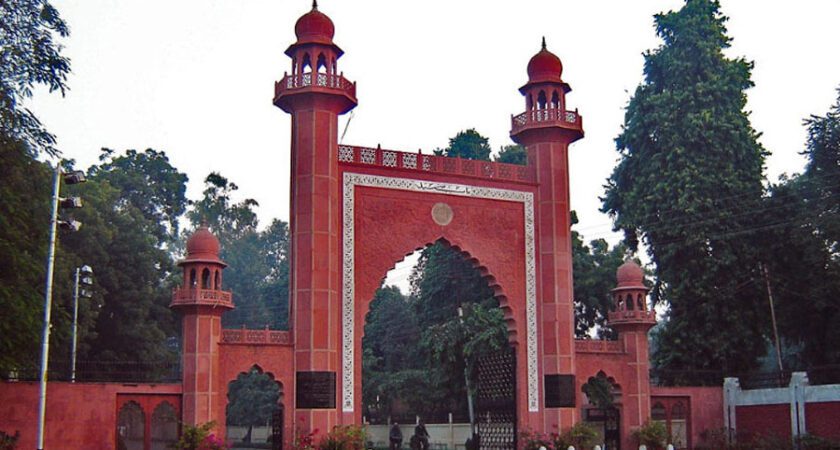The Class XI Science Stream syllabus from the Senior Secondary School includes the subjects Physics, Chemistry, and Life Science for the science portion of the admission test. The test also includes Mathematics, General Knowledge, English, and Indo-Islamic Culture. Each subject has a specified number of marks, with Science (50 marks), Mathematics (30 marks), General Knowledge (5 marks), English (5 marks), and Indo-Islamic Culture (10 marks). The syllabus is based on the Aligarh Muslim University’s curriculum for Class IX and X and aligns closely with the CBSE/NCERT syllabus.
Here is a brief overview of the contents for each subject:
Physics
- Motion: Distance, displacement, velocity, acceleration, equations of motion, and uniform circular motion.
- Force and Newton’s Laws: Concepts of force, inertia, mass, momentum, conservation of momentum, action and reaction.
- Gravitation: Universal law of gravitation, gravity, mass and weight, free fall.
- Work, Energy, and Power: Work done by force, kinetic and potential energy, conservation of energy.
- Flotation: Thrust, pressure, Archimedes’ principle, buoyancy, relative density.
- Sound: Propagation, speed, human hearing range, ultrasound, reflection, echo, SONAR.
- Electricity: Potential difference, Ohm’s Law, resistors in series and parallel, power dissipation, domestic electric circuits.
- Magnetism: Magnetic field, electromagnetism, Fleming’s left-hand rule, AC vs DC, electromagnetic induction.
- Optics: Light behavior, mirrors, lenses, refraction, human eye, scattering of light.
- Sources of Energy: Different energy sources, renewable vs non-renewable.
Chemistry
- Matter: States, properties, and changes of matter.
- Nature of Matter: Elements, compounds, mixtures, colloids, suspensions.
- Atoms and Molecules: Law of constant proportions, atomic and molecular masses, mole concept.
- Structure of Atom: Subatomic particles, isotopes, isobars.
- Environment: Air, water, soil, pollution, biogeochemical cycles.
- Acids, Bases, and Salts: Properties, examples, uses.
- Chemical Reactions: Types, including combination, decomposition, displacement, neutralization, oxidation, and reduction.
- Metals and Non-Metals: Properties, metallurgical processes.
- Carbon Compounds: Bonding, soaps, periodic table.
- Conservation of Resources: Management and conservation of natural resources.
Life Science
- Life Processes: Nutrition, respiration, transport, excretion in plants and animals.
- Control and Coordination: Hormones, nervous system, reflex actions.
- Reproduction: Asexual and sexual reproduction, family planning, women’s health.
- Heredity and Evolution: Basic concepts.
- Natural Resources: Conservation, environment issues, ecosystem, food chains, and webs.
- Health and Diseases: Infectious and non-infectious diseases, prevention, and treatment.
- Biological Diversity: Classification, hierarchy, major plant and animal groups.
- Cell Biology: Cell structure, organelles, tissues, health, and disease.
- Transport in Living Systems: Diffusion, nutrition, excretion, gaseous exchange.
Mathematics
- Number Systems: Real numbers, irrational numbers, exponents, rationalization.
- Algebra: Polynomials, linear equations, quadratic equations, arithmetic progressions.
- Coordinate Geometry: Cartesian plane, distance formula, section formula.
- Geometry: Euclid’s geometry, lines, angles, triangles, quadrilaterals, circles.
- Mensuration: Areas and volumes of shapes and solids.
- Statistics and Probability: Data interpretation, probability theory basics.
General Knowledge
- Current Affairs
- Awards and Honours (Civilian and Nobel)
- Games and Sports
- Religious Scriptures
English
- Subject-Verb Agreement
- Use of Prepositions / Conjunctions
- Active and Passive Voice
- Vocabulary & Usage
- Use of Articles
- Idioms & Phrasal Verbs
- Detecting Errors in Sentences
Indo-Islamic Culture
Muslims in India: An Overview
-
Famous Rulers of the Sultanat & Mughal Empire
- Qutubuddin Aibak (Take the Quiz)
- Alauddin Khilji (Take the Quiz)
- Firoz Shah Tughlaq (Take the Quiz)
- Zahiruddin Babar (Take the Quiz)
- Sher Shah Suri (Take the Quiz)
- Jalaluddin M. Akbar (Take the Quiz)
- Aurangzeb Alamgir (Take the Quiz)
-
Indo-Islamic Architecture (Famous Monuments)
- Qutub Minar (Take the Quiz)
- Golconda Monuments
- Red Fort
- Taj Mahal
- Jama Masjid
- The Gol Gumbaz
- Atala Masjid
-
Religious Co-existence: Select Sufism Tradition and Bhakti Movement
- Amir Khusru
- Khwaja Gesu Daraz
- Khwaja Moinuddin Chishti
- Baba Farid Ganje Shakkar
- Khwaja Nizamuddin Awliya
- Sheikh Ahmad Sirhindi
- Shah Waliullah
- Guru Nanak Dev
- Kabir Das
- Mira Bai
- Tulsidas
-
Contribution of Muslims in the Indian Freedom Movement
- Bahadur Shah Zafar
- Tipu Sultan
- Maulana Mahmoodul Hasan
- Ali Brothers
- Maulana Hasrat Mohani
- Maulana Abul Kalam Azad
Sir Syed and Aligarh Movement
- Life and Works of Sir Syed
- Literary Contribution of Sir Syed
- Architect of Educational Reforms: Bridging Tradition and Modernity; Establishment of AMU
Suggested Books for Indo-Islamic Culture
- Text Book of History Class IX – X
- Sir Syed by Sir Syed Academy (A Short Introduction – AMU Centenary Year 2020)
- Qazi Zainul Aabideen, Tarikh e Millat
- Knowing India: A Transforming Story by D.K. Hari and D.K. Hema Hari
- India 2024 Current Affairs by Rajendra Prasad
- Glimpse of Scriptures of Religions of Indian Origin by Ashok K. Sinha
View/Download the original Class XI Science Stream Syllabus
